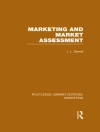Economics is regarded as a branch of applied physics.* Wealth is defined exact quantitatively as wealth ring. Wealth ring consists of production sector, exchange sector, consumption sector, and environmental sector. This is a logical expansion of traditional economics of supply and demand . Money is defined as a universal exchanger.
By extending the conservation laws in physics to economics, a fundamental exact quantitative theorem has been found to be obeyed by wealth creating activities.
This new way of economic analysis has seven quantum frameworks that are abstracted from quantum field theory.
The immediate advantage is to give an analytical way to increase wealth of nation. We have used it to understand the rapid rise of wealth in China in thirty years from 1980 to 2010. Other nations and other entities could use similar analytical method to increase their wealth rapidly.
The evolution of human society is considered to evolve from hunter-gatherer society to agricultural society, from agricultural society to industrial society, and now should evolve from industrial society into an ecological society.
* 'Prebiotic Chemical evolution→ Biological Evolution (organisms and ecosystem) → Individual learning and thinking → Human cultural evolution → Evolution of economies including the Global economy’ By Murray Gell-Mann, Nobel laureate in theoretical Physics, 1969.
用物理分法分析經濟學:快速增加財富的方法
經濟學是應用物理學的一個分支*。財富的精確定量的定義為財富圈。財富圈是由生產,交換,消費和環境四個部門組成。這是由傳統經濟學的供給和需求擴展而成。
金錢被定義為普遍交換者。
通過將物理學中的守恆定律擴展到經濟學上,發現所有財富增加都遵循一條精確定量定理。
量子框架這種新的經濟分析方式具有, 是從量子場論中抽象出來的七個量子框架。
量子框架的優勢是能提供一種分析方法來研究增加國家財富的辦法。我們用它來瞭解1980年至2010年這30年間中國財富快速增長的理由。其他國家和其他經濟實體也可以使用同樣量子框架的分析方法來找到它們自己快速增加財富的辦法。
人類社會的發展是從獵人-收集社會發展為農業社會,從農業社會發展為工業社會,現在應該從工業社會發展為生態社會。
* '生物前的化學進化→生物進化(有機體和生態系統)→個人學習與思考→人類文化進化→包括全球經濟在內的經濟進化’—默里•蓋爾曼,諾貝爾理論物理學獎獲得者/1969年
Spis treści
Table of Contents
Preface
Chapter 1: Definition of wealth as wealth ring
1.1 Definition of wealth by others
1.2 Exact definition of wealth W is wealth ring W (p, e, c, o)
1.3 Money, the universal exchanger
1.4 An example of annual production of wealth and devaluation
Chapter 2: Agricultural society, and First, Second, and Third Industrial revolution
2.1 Simple views of Agricultural society, First, Second, and Third Industrial revolution.
2.2 Quantum frameworks: QF1, QF2, QF3, QF4, QF5, QF6, QF7.
2.3 Picture of the wealth ring
Chapter 3: The Production Sector W (p)
3.1 Agricultural society, First, Second and Third Industrial revolution
3.2 The production sector W(p)
QF1: Uncertainty
QF2: Quantum Duality
QF3: Three ways to influence production
QF4: Four macroscopic human variables p, q, r, s:
QF5: Five fundamental variables (n, t, x, E, j).
QF6 symmetries
QF7: Action S
3.3 Production chain and competition
3.4 A production model that drastically increases production.
3.5 Coherent production model:
3.5 Production model for unemployment and its solution:
3.7 Classification of industry according to products in the production sector N(p)
Chapter 4: The Exchange sector W (e)
4.1. Quantum Framework :
4.2 Markets: farm markets, Department stores , supermarket, stock markets, money markets, internet,
4.3 Production-exchange Model: picture to illustrate
Chapter 5: The consumption sector W ( c ).
5.1 Quantum Framework of the consumption sector W (c )
5.2 Eight major types of consumption:
5.3 Service industry as part of consumer chain. picture of consumer chain
5.4: Competition among consumers and exchangers Fig(5.2) and Fig (5.3) , a Pictorial presentation
5.5 : The environmental sector of the wealth ring W(o) :
5.6 Model for competition in Production, exchange and consumption sectors
5.7 Classification of industries according to wealth creation and its relations with International Standard Industrial Classification
Chapter 6: Fundamental law of increase of wealth.
6.1 Agricultural reform:
6.2 Increase exchange N(e)
Chapter 7: The rapid rise of wealth of China in thirty years from 1980 to 2010
7.1 The thirty years from 1949 to 1979 :
7.2 300 years into 30 years
7.3. The rapid rise of wealth in all three sectors: production sector, exchange sector, and consumption sector .
7.4 Infrastructure:
7.5 Superstructure
7.5 Superstructures – party and government
7.6 Cluster Model of exchangers:
7.7 Model of Road and rapid increase of wealth:
7.8 Model of free trade, tax and increase of wealth
7.9 The role of peasants in the rapid increase of wealth
7.10 The role of Special Economic Zone
7.11 Other people’s reasons behind the rapid increase of wealth in China in 30 years
7.12 Time line for the era of Economic Reform and open door
Chapter 8 Quantum Framework for the economy of current world
8.1 Quantum Framework 1, 2, 3, 4, 5, 6, 7 from quantum physics
8.2 The Environmental sector W(o) and an Ecological State
8.3 Gold mountain Model
8.4 Ecological City Model:
8.5 Fourth Industrial Revolution
Chapter 9 Quantum Economic- a Summary
9.1 Two precise concepts and one fundamental theorem
9.2 Sufficient variables are invented to describe major economic activities
9.3 Ten simple models are invented.
9.4 Inclusive framework
9.5 The future of human society is an ecological society.
Appendix












